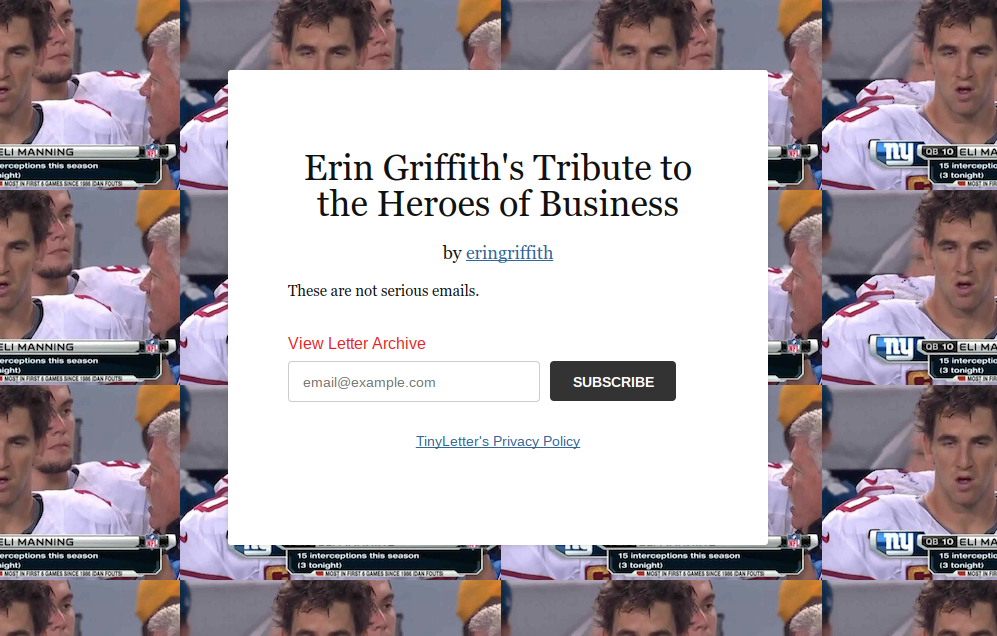Content Strategy
The Rise of the Journalistic Email Newsletter: A New Way to Reach Your Niche Audience
By Jonathan Crowl on January 9, 2018
One of the greatest advantages of digital marketing is the sheer volume of the overall online audience. But for most brands, this value has nothing to do with the ability to reach millions and even billions of people. Rather, the opportunity lies within your ability to identify and engage with a niche audience that may be spread out across different regions and industries.
Volume lends itself to scalability. And greater scalability means that content can become more specialized than ever before. One result of this scalability is the growth in popularity of the journalistic email newsletter, which has been championed by some early adopters and is becoming a more popular method of audience engagement.
As brands invest in a hybrid form of marketing that organizes trained journalists into brand newsrooms, new formats and content are beginning to rise-especially when it comes to content that marketers previously couldn't have created themselves, whether due to a lack of writing skills or time. Journalistic newsletters are a perfect illustration of how the incorporation of journalistic elements has raised the newsletter game to a new level while creating a new experience for consumers to enjoy.
Custom Content with a Personal Touch
Journalistic newsletters are not a replacement of the traditional newsletter, which repackages relevant and recently published content to be redistributed in an email format that may be sent out monthly, weekly, or even daily.
Instead, journalistic email newsletters are written specifically for your email inbox. In many cases, this content can't even be found publicly at an online destination. You have to be a subscriber to access this original, expert content, which creates an intimacy and a strong selling point for adding your email to the list of subscribers. If the newsletter's subject matter is relevant to your professional interests, you're almost compelled to sign up, otherwise you're at risk of missing out on insider content that is freely available to your competition.
In general, journalistic newsletters should be seen as smaller publishing imprints related to the larger, more general brand newsletter. An outdoor retailer may find plenty of value in a general consumer newsletter that highlights new products or sales alongside general content for outdoor adventurers, but it may also see an opportunity to create custom journalistic newsletters created for a community with specific interests. One of these newsletters might be written by an expert rock-climber-turned-journalist, who reports on trends within that discipline while also sharing their personal experiences. A similar approach could be taken for consumers interested in triathlons or ultramarathons.
Journalistic newsletters leverage individual expertise to provide a deeper dive into subject areas of interest to an audience. These can be subjects with broad appeal-personal finance or stock investments, for example-but they can also focus on subjects with a far more niche following. Thanks to the scalable audience found online, a niche publication can still add considerable value to larger marketing strategies. This ROI is dependent on building a publication that appeals to its audience and builds a relationship through the email inbox.
Using Email to Start a Dialog
In any form, newsletters offer incredible ROI when they're executed properly. Digiday reported in 2015 that the New York Times employs a 12-person team responsible for managing dozens of different newsletters, and the organization has seen incredible success through this engagement strategy, with the average newsletter enjoying a gross open rate of more than 50 percent.
Some of those newsletters are built around individual blogs and columns and were created in response to a dedicated following that wanted deeper engagement with the content. More recently, emerging journalistic newsletters are establishing some best practices for creating content that makes use of email as a non-public, semi-exclusive channel for growing audience reach and building a loyal following.
Image attribution: Green Chameleon
There are a handful of consistent themes among successful journalistic newsletter imprints.
Newsletters should be written by humans, not RSS feeds
Linking from the newsletter to existing website content is an important component of these successful newsletters, but it isn't enough to simply create a newsletter template that plugs in top stories into pre-set spaces on the page. The New York Times makes a concerted effort to have human writers create their newsletters, even though these newsletters are primarily focused on referring traffic to existing articles featured on their website. Journalistic newsletters will inevitably feature similar linking, but with the added wrinkle that the written content is the main attraction, rather than merely a lead-in to link promotion.
Some content must be exclusive to the newsletter
This is a practical decision affecting the subscriber rate of your newsletter: If consumers can simply visit a page that collects and archives every newsletter you send, their incentive to subscribe plummets. Consumers need to understand that this content is custom made for email, and that email is the only place it can be found. Turning their inbox into a destination for engagement will improve your customer relationships and your audience reach.
The author must have some industry clout
Many successful examples of journalistic newsletters feature an expert authoring the content under the banner of a larger brand. Axios' successful Pro Rata newsletter is written and published by its reputable business editor, Dan Primack. Erin Griffith is a senior editor for Wired with a long track record of success, but her popular "Tribute to the Heroes of Business" TinyLetter is an operation independent from her full-time reporting gig.
The key to newsletter design: Keep it simple, stupid
The RSS feed-style templates for newsletter are grounded in concepts of good web design, but they also present problems when it comes to displaying properly in different email formats, and they can overload the reader's eye with too many links and stories to choose from. If you think of the journalistic newsletter as intimate correspondence between a brand and its audience, then it should reflect this stripped-down approach with a simple, streamlined design. Both Pro Rata and Utterly Biased, another experimental newsletter enjoying early success, feature very basic designs that stand back and let the written content speak for itself.
Standard email newsletters still have a place, but a growing trend toward brand journalism is revealing new opportunities to build and deepen connections through content. The journalistic email newsletter is one such way of melding journalism and brand marketing to build a better experience for consumers-and to build a new asset that generates ROI for years to come.
For more stories like this, subscribe to the Content Standard newsletter.



